















Honda CBR600RR |
|---|

|
| Topic Navigation |
|---|
|
Wikipedia: Honda CBR600RR
Page Sections History Photographs |
History
The following section is an excerpt from Wikipedia's Honda CBR600RR page on 10 November 2016, text available via the Creative Commons Attribution-ShareAlike 3.0 Unported License.
The Honda CBR600RR is a 599 cc (36.6 cu in) sport bike, part of the CBR series that was introduced by Honda in 2003 as a race replica version of Honda's CBR600F series. It won every Supersport World Championship title from 2002 to 2008, and again in 2010 and 2014.
Revision history: 2003-2004
The CBR600RR was introduced in 2003 as race replica alternative to Honda's more street oriented 600-class sport bike, the CBR600F4i. It was based on technologies used in the Honda RC211V MotoGP bike, and was given a similar appearance. It was the first Honda to use Unit Pro-Link rear suspension and Dual Stage Fuel Injection (PGM-DSFI), both were taken directly from Honda's MotoGP bike. Honda said the use of its new 'Hollow Fine Die Cast' frame technology, in which sand casting molds were given a ceramic interior coating, made it possible to reduce the five-piece aluminum frame thickness from 3.5 mm to 2.5 mm.
The 2003 model carried over to 2004 technically unchanged, with only the addition of an oxygen sensor.
Revision history: 2005–2006
In 2005, the CBR600RR received a major revision with new bodywork, fully adjustable inverted front forks, disc brakes with radial-mounted four-piston calipers, and a new aluminium frame, swingarm and rear shock. The midrange power was also increased. These changes along with additional refinements to the engine and exhaust system brought CBR600RR's wet weight down by 10.0 kg (22 lb), and dry weight by 4.1 kg (9 lb) The 2006 model was unchanged from the 2005 model.
Revision history: 2007–2008
Weight was the primary focus of the redesign. The result was a 9.1 kg (20 lb) reduction in dry weight over the 2006 model, from a claimed 163.7 kg (361 lb) to 154.7 kg (341 lb). Tested weights without fuel were 182–182 kg (401–402 lb).
In redesigning the CBR600RR for lighter weight and increased performance, Honda's engineers started with the engine. The completely new engine was smaller and lighter than its predecessor, the designers having used careful positioning of all internal components to achieve reductions in the motor's length, width, and height, as well as reducing weight by 2 kg (4.4 lb) compared to the 2006 model's powerplant. Horsepower increased to about 105 hp (78 kW) measured in independent tests.
The frame was lighter and more compact than the 2006 CBR600RR. The handling of the new bike was sharpened by its 22 mm (0.87 in) shorter wheelbase, as well as by the designer's focus on strict mass centralization. Despite the shorter wheelbase, the 2007 model's swingarm was 5 mm (0.20 in) longer than that of the 2006, made possible by the more compact dimensions of the new bike's engine.
The suspension of the 2007 model was carried over almost unchanged from the 2006 bike, with the same 41 mm (1.6 in) inverted fork in front, and Honda's Unit Pro-Link rear suspension configuration damping the rear wheel. The new three-spoke cast aluminum wheels were also lighter than those on the 2006 bike, which further contributed to the enhanced performance of the suspension. The brakes had dual radial-mount four-piston calipers and twin 310 mm (12 in) discs at the front, and a single-piston caliper and a 220 mm (8.7 in) disc at the rear. Hidden below the steering head was an updated version of the Honda Electronic Steering Damper (HESD) system, which was also available on the CBR1000RR.
The smaller, sharper-edged new front upper fairing was dominated by the large central ram-air duct which fed the airbox through an opening in the steering head section of the frame and was separated from the sides of the fairing by a large gap which Honda said was for air management purposes. The tail-section was similarly smaller and sharper-edged, riding atop a heavily restyled under-seat muffler.
Revision history: 2009-2012
On September 5, 2008, Honda introduced a revised CBR600RR for the 2009 model year. Combined ABS became available as an option. Other changes included updates to the engine such as changes to its pistons, cylinder head and exhaust that Honda claims will increase torque delivery between 8,000–12,000 rpm with a 3.5% increase in torque at 10,000 rpm. The CBR600RR’s engine also received a new high resistance valve lifter and a popup valve system inherited from the CBR1000RR. Included also are improved fairings that enhance stability and reduce noise emission levels. Although all of these changes involved the addition of some materials, the overall weight of the 2009 CBR600RR remained the same as the 2008 model. This was achieved through weight savings in the engine, exhaust, and the chassis.
The CBR600RR carried over for the 2010, 2011 and 2012 model years.
Revision history: 2013–2016
The 2013 CBR600RR includes new 12-spoke wheels, revised ECU settings, and a fine-tuned ram-air system to increase torque. It also gets a new Showa "Big Piston Fork" and retuned rear shock in a new bodywork. The model continued unchanged through the 2016 model year. Motorcycle.com said that while the CBR600RR's performance specifications, particularly the horsepower, were "pretty tame even for the middleweight class", and it lacked the newest technologies like cornering ABS, traction control and mobile apps, it remained a comfortable and good handling sport bike for the street.
According to Motor Cycle News, an unnamed Japanese source at Honda said that CBR600RR sales in Europe and the UK will end after the 2016 model year due to the redesign costs necessary to comply with Euro4 emissions regulations, which will come into effect on January 1, 2017. Sales of 2017 model year CBR600RRs in other markets are unaffected.
 |
Subject: 2006 Honda CBR600RR
Photographer: Rich Niewiroski Jr. Date: 11 November 2006 View photo of 2006 Honda CBR600RR - 1,235KB |
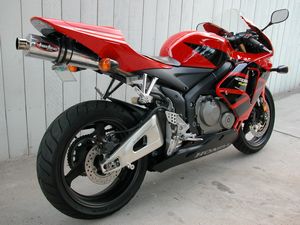 |
Subject: 2006 Honda CBR600RR
Photographer: Rich Niewiroski Jr. Date: 11 November 2006 View photo of 2006 Honda CBR600RR - 1,368KB |
 |
Subject: 2006 Honda CBR600RR
Photographer: Rich Niewiroski Jr. Date: 11 November 2006 View photo of 2006 Honda CBR600RR - 1,515KB |
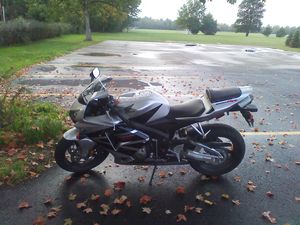 |
Subject: Honda CBR600RR
Photographer: Bill Crittenden Location: Woodstock, Illinois Date: 20 September 2010 View photo of Honda CBR600RR - 525KB |
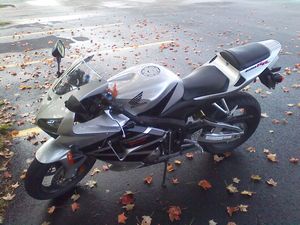 |
Subject: Honda CBR600RR
Photographer: Bill Crittenden Location: Woodstock, Illinois Date: 20 September 2010 View photo of Honda CBR600RR - 488KB |
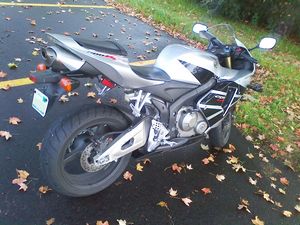 |
Subject: Honda CBR600RR
Photographer: Bill Crittenden Location: Woodstock, Illinois Date: 20 September 2010 View photo of Honda CBR600RR - 869KB |
 |
Subject: Honda CBR600RR
Photographer: Bill Crittenden Location: Woodstock, Illinois Date: 20 September 2010 View photo of Honda CBR600RR - 1,081KB |
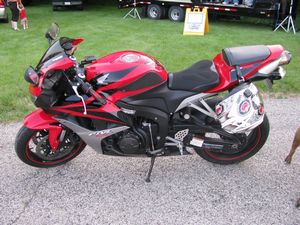 |
Subject: 2007 Honda CBR600RR
Photographer: Bill Crittenden Event: Green Street Cruise Night: 6 June 2011 View photo of 2007 Honda CBR600RR - 4,977KB |
 |
Subject: 2007 Honda CBR600RR
Photographer: Bill Crittenden Event: Green Street Cruise Night: 6 June 2011 View photo of 2007 Honda CBR600RR - 3,871KB |
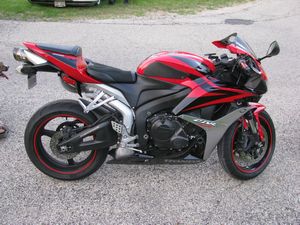 |
Subject: 2007 Honda CBR600RR
Photographer: Bill Crittenden Event: Green Street Cruise Night: 6 June 2011 View photo of 2007 Honda CBR600RR - 5,053KB |
